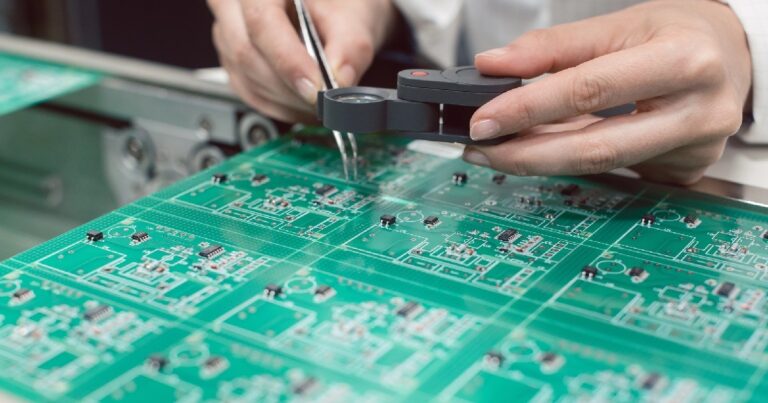As electronics continue to evolve, PCBs (printed circuit boards) are becoming more powerful, compact, and complex. That complexity, however, often brings new challenges during the assembly stage. Even the most carefully engineered design can run into costly errors or delays if certain details are overlooked.
At Sonic Manufacturing Technologies, we understand how critical it is to get PCB assembly right the first time. Here are some of the most common pitfalls in complex PCB assembly and how to avoid them.
Overlooking Design for Manufacturability (DFM)
One of the most common challenges in complex PCB assembly arises when a design is not optimized for manufacturability. A schematic may look perfect on paper or function well in simulation, but once it reaches the production floor, even small oversights can cause significant setbacks.
For example, insufficient spacing between components can make automated assembly difficult, while awkward placement of connectors or vias can interfere with soldering, reflow, or testing processes. These issues often lead to slower production, reduced yields, or the need for costly redesigns.
DFM is about bridging the gap between design and production. It ensures that the choices made during layout and engineering are practical for high-quality, repeatable assembly at scale. Without DFM, a board that looks impressive in concept may turn into a bottleneck in manufacturing, resulting in wasted time, higher costs, and missed deadlines.
How to avoid it: The key is collaboration. Involving your assembly partner early in the design phase helps identify potential pitfalls before they become expensive problems. At Sonic, our engineering team performs comprehensive DFM reviews, analyzing everything from component spacing and layer stack-up to solderability and testing accessibility.
Underestimating Component Sourcing Challenges
Another major pitfall in complex PCB assembly comes from not accounting for component availability. Many designs rely on specialized or hard-to-source parts, and in today’s global supply chain environment, shortages or long lead times are more common than ever. A single unavailable component can stall an entire production run, forcing redesigns or substitutions that delay time-to-market.
The risk is even greater with advanced boards that use high-performance chips, specialized connectors, or legacy components no longer in wide circulation. Without proper planning, what looks like a strong design on paper may hit roadblocks when it’s time to procure parts.
How to avoid it: Proactive sourcing strategies make all the difference. At Sonic, we integrate supply chain management directly into the design and assembly process. By validating component availability early and identifying qualified alternates, we help customers reduce the risk of delays and keep production moving.
Ignoring Thermal Management Needs
High-density, high-power PCB designs generate heat, and if thermal management is overlooked, the results can be damaging. Excessive heat not only reduces component lifespan but can also cause immediate failures, from warped boards to malfunctioning chips. With today’s push toward smaller, faster, and more powerful devices, the risk of overheating is greater than ever.
The challenge is that thermal issues don’t always show up during design simulations. Once a prototype is in use, hot spots can emerge where airflow is limited or where heat-producing components are placed too closely together. Without proper foresight, these problems can undermine performance and reliability.
How to avoid it: Thermal management should be built into the design from the start. This might include using thermal vias, heat sinks, or selecting PCB materials with better heat resistance. At Sonic, we work closely with customers to analyze thermal behavior early in the process, making design recommendations that balance performance with manufacturability. This proactive approach helps ensure that products perform consistently in real-world conditions.
Skipping Thorough Testing and Inspection
For complex PCB designs, testing is essential. Yet, some projects cut corners in this area to save time or cost, only to discover hidden defects later. Issues like soldering defects, open circuits, or component misplacements may pass unnoticed during assembly but can cause field failures once the product is deployed. Fixing these problems after the fact often means costly rework, warranty claims, or even recalls.
Testing and inspection provide the safety net needed to ensure that every board functions as intended before it reaches customers. Skipping this step undermines confidence in the product and can damage a brand’s reputation.
How to avoid it: Build testing and inspection into every stage of production. At Sonic, we use a combination of automated optical inspection (AOI), X-ray inspection, in-circuit testing (ICT), and functional testing to catch issues early. By integrating these checks into our process, we deliver boards that meet the highest quality standards and give customers peace of mind knowing their products are reliable.
Partnering for Smarter, Smoother PCB Assembly
Complex PCB designs demand equally sophisticated assembly strategies. By prioritizing manufacturability, anticipating supply chain hurdles, addressing thermal needs, and investing in rigorous testing, you can prevent costly setbacks and keep your project on track.
At Sonic Manufacturing Technologies, we combine advanced assembly capabilities with hands-on engineering support to help you bring complex designs to life, efficiently, reliably, and at scale. Contact our team today to learn how we can support your design from prototype to production.

